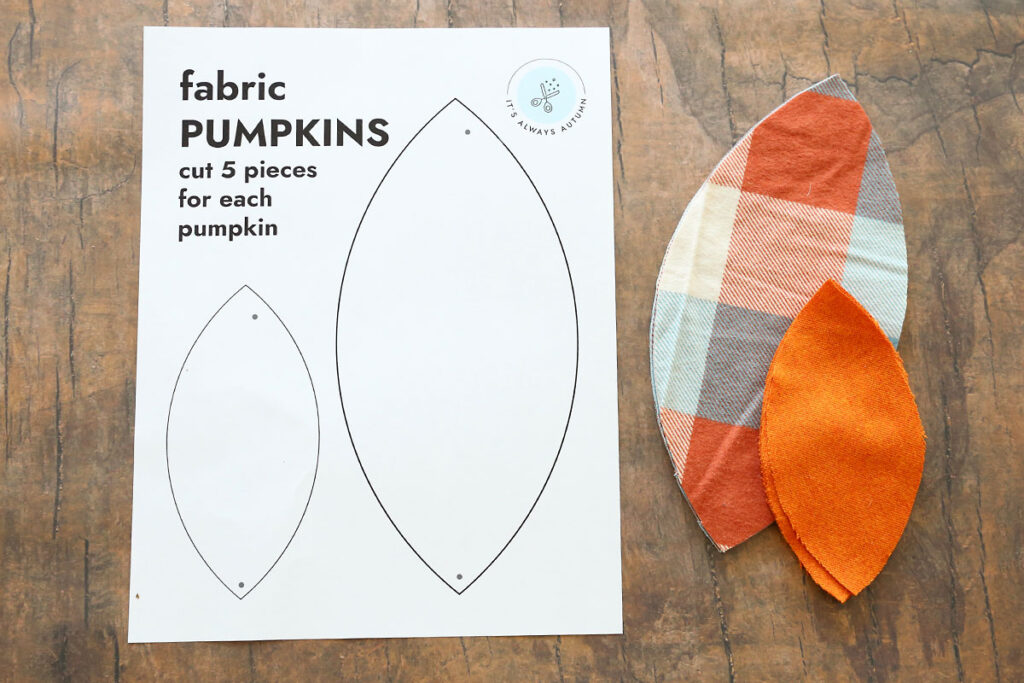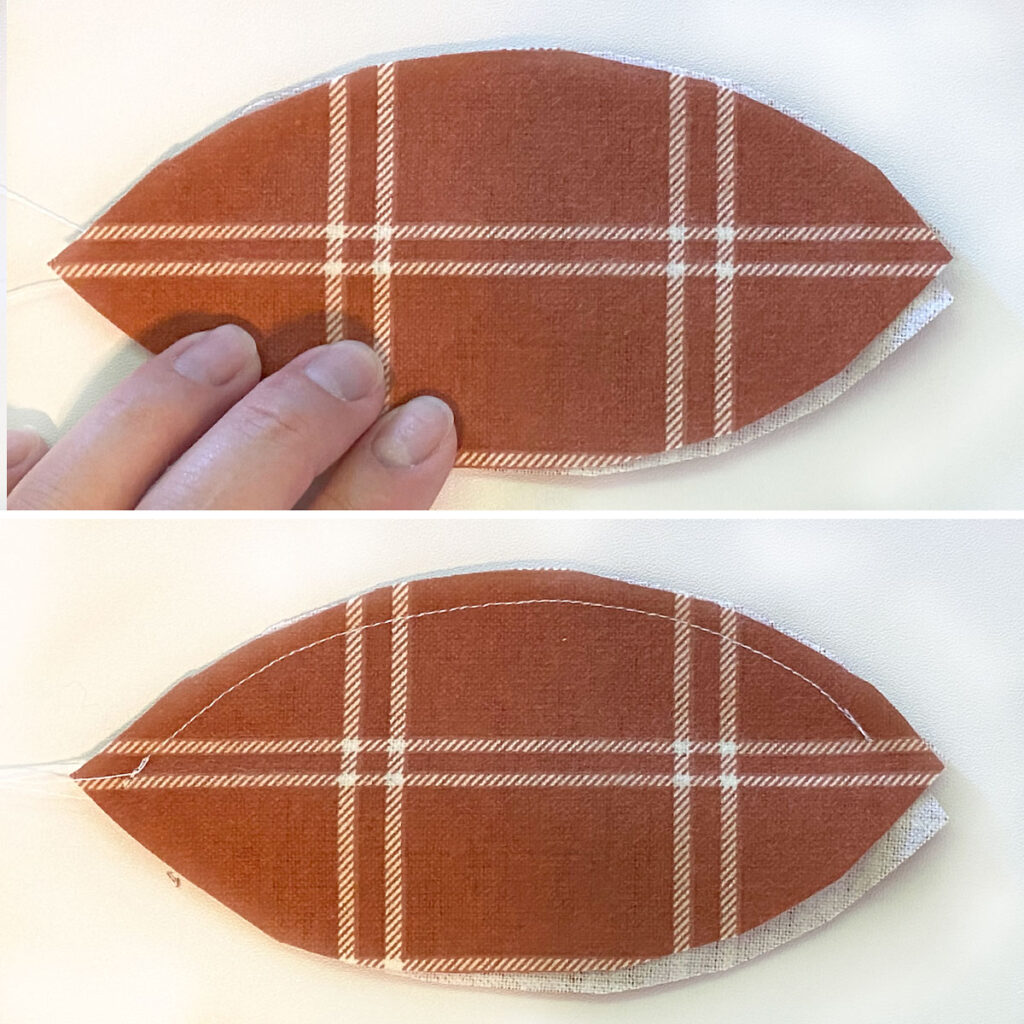These adorable fabric pumpkins are a breeze to make and are one of my favorite DIY projects for fall! The process is similar to sewing a fabric ball, but in this case, you’ll leave the seams exposed on the outside to mimic the natural ridges of a pumpkin. You’ll need a sewing machine and some basic sewing skills, but it’s a straightforward craft! Read on for the details!
SUPPLIES
Here’s what you’ll need to create your fabric pumpkins:
- Fabric Pumpkin Pattern: Download it from the blue box above.
- Fabric: I used flannel in beautiful fall colors and prints. A quarter yard is enough for one large and one small pumpkin or three small pumpkins. Feel free to mix in scrap fabric with different textures for a playful touch.
- Sticks for Pumpkin Stems: I collected some sturdy sticks from a nearby park.
- Decorative Elements: Gather ribbons, twine, leaves, and other embellishments for added flair.
- Stuffing: You’ll need about an ounce or two of poly fill for each pumpkin.
- Sewing Machine and Thread: Essential for sewing your pumpkins together.
Get ready to have fun crafting your unique fabric pumpkins!
STEP-BY-STEP GUIDE
Cut Out The Pieces: Once you’ve printed the pattern, you can cut out the pieces. Each pumpkin requires five petal-shaped pieces. To minimize fraying, place the pattern upright on the fabric, as this will cut the edges on the bias. If you prefer a more rustic look with some fraying, position the pattern piece at a 45-degree angle on the fabric.

Sew Two Pieces Together: To sew the two pieces together, place them with the wrong sides facing each other, so the right sides are on the outside. Sew along one curved side from corner to corner (or point to point). The start of the seam should align with the point or center line of the petal, while the end should stop about 1/8 inch before reaching the center line. As you sew all five pieces together, you will be shaping a ball. By beginning at the center and stopping 1/8 inch before it, you’ll create a closed bottom for the pumpkin while leaving an opening at the top for the stem. Refer to the photo below for guidance.

Backstitch at both the beginning and the end of your seam. For the smaller pumpkins, use a 3/8-inch seam allowance, while for the medium-sized pumpkins, a 1/2-inch seam allowance is recommended.
Add The Third Piece: After sewing the first two pieces together, place them on a table with the seam along the bottom edge. In the photo below, you can see that the beginning of the seam (on the left) aligns with the center line of the piece, while the end of the seam (on the right) stops 1/8 inch before reaching the center line, as mentioned in step 2. Now, fold down the upper half of the piece on top.

Next, place a third piece over the existing two, aligning the top edges. Be sure that the wrong sides are together once again. Sew the new piece in place, starting at the center line and stopping 1/8 inch before reaching the center line.

Add Pieces 4 + 5: Now, repeat the same process for the fourth and fifth pieces. Flip the sewn pieces over so that the seam runs along the bottom edge, and then fold down everything except for the bottom piece.

Place the fourth piece over the existing pieces, aligning the top edges, and sew as directed. Repeat this process one more time to attach the fifth piece as well.
Stuff + Close: Once all five pieces are sewn together, spread them out to reveal the shape of the ball you’ve created.

Take a large handful of stuffing and fill the ball, gently squishing it to the sides. Once filled, pull the two raw edges together to meet and pin them closed, making sure to pin about an inch away from the edge. This will create enough space to maneuver the seam under the presser foot of your sewing machine.

Sew this final seam the same way you’ve sewn all the others.
Add A Stem + Decorate: Now you have a ball that is closed at the bottom but has a small hole at the top. Use scissors to trim any loose threads. If you’d like to add more stuffing, you can use a pencil to push additional stuffing through the hole. The amount of stuffing is entirely up to you; I prefer mine to be fairly squashy, so I don’t use too much.

Now you can choose a stick to use as a stem and decide how you want to decorate your pumpkin. For some of my pumpkins, I simply tied green burlap ribbon around the stick. Then, I applied a generous amount of hot glue to the bottom of the stick and pressed it down through the hole in the top of the pumpkin, adding extra glue around the hole if needed. For others, I glued the stick in first and then wrapped twine around it. You can also add felt leaves or even pipe cleaners twisted to resemble vines if you’d like.








